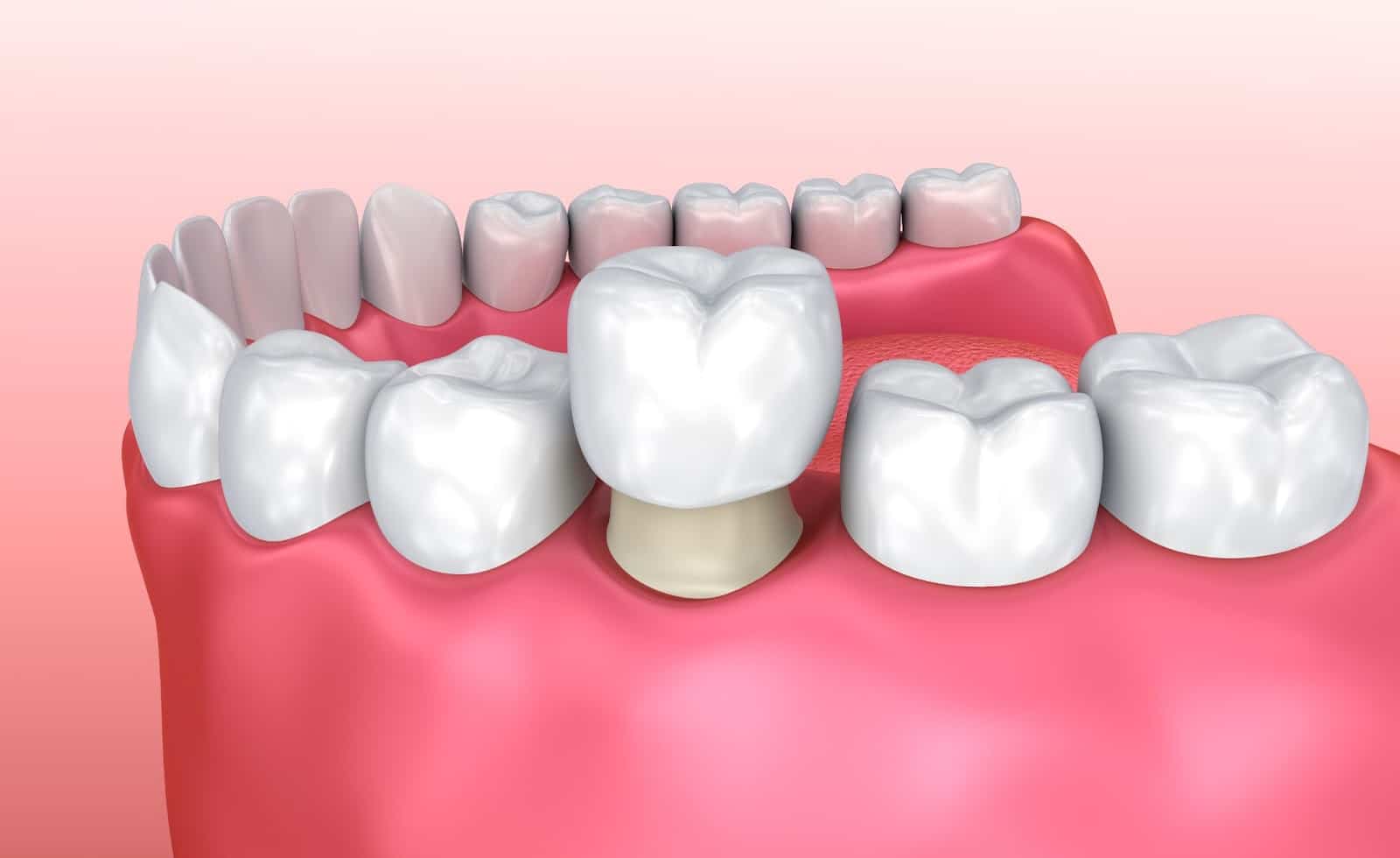Did you know that 89% of Australians have experienced some form of tooth decay in their lifetime? A staggering statistic for a country that enjoys one of the highest living standards in the world. Luckily, there are numerous methods and solutions for treating decayed teeth available.
So if you’re worried about what to do with your damaged teeth, don’t stress. Talk to your dentist. There are many restorative options available including dental crowns for those teeth needing larger restorations restored.
What Are Dental Crowns?
A dental crown is a thin layer of material that covers damaged or decayed teeth and is an effective treatment in keeping your smile and restoring your teeth. Crowns help protect and prevent further damage to your teeth while simultaneously making teeth stronger.
Crowns can be a great option if you have an area of damaged tooth too large for a filling, as they can cover the missing space and keep your teeth looking healthy and natural. Whatsmore, dental crowns have good longevity and can be a good value for money over the long term.
How Does A Dental Crown Work?
Here is a step-by-step guide to the dental crown procedure:
- Your dentist will numb the area of your mouth where the damaged tooth is so that they can begin the crown procedure.
- The dentist will then remove a thin layer (approximately 1.5 – 3 mm) from the outside of your tooth and then take an impression of your tooth and the surrounding teeth.
- The impression is then sent to a lab, where a technician will make your crown for you. It will be made to match the colour and shade of your existing teeth.
- While your permanent crown is being made, your dentist will place a temporary crown to protect the tooth.
- Once your permanent crown is made, your dentist will use dental cement to adhere the crown to your tooth.
Note: For dental crowns to be most successful, you need to have a sufficient amount of healthy existing teeth remaining for the crown to be cemented onto, to reduce the risk of future fracture or failure. Talk to your dentist to see if a crown is a suitable option for your broken or previously restored tooth. There are several advantages of using crowns, most notably, how great your teeth will look and the fact that crowns make your existing teeth stronger. Some other benefits include:
- Fills areas that are too large for fillings
- Adds strength to heavily restored or decayed teeth
- Aesthetics (your teeth will look great)
- Long-lasting (crowns last for between 5 to 15 years)
- Can be used to cover stained teeth to improve aesthetics
If you have any queries about dental crowns, please get in touch with us or book an appointment today. We’d love to help get you on your way to having the healthy and strong teeth you’ve been dreaming about.
What Are Dental Crowns Made Out Of?
Dental crowns can be constructed from several different materials, and the exact material a dentist chooses will depend on your unique situation. Your dentist will assess your bite, the health of the tooth nerve and the available healthy tooth structure remaining before deciding on the best material for your crown. Some typical materials used for dental crowns include:
- Porcelain
- Ceramic
- Composite
- Zinconia
- Gold alloy
- Metal alloy
Crown Your Teeth
Now that you know the basics about dental crowns, how they work, some of their many advantages, and what they can be made out of, you can understand how dental crowns can be an incredibly effective method of restoring your decayed teeth.
To summarize the main points of this post:
- Dental crowns protect and strengthen damaged teeth.
- Crowns are long-lasting and an effective long term solution to treat decayed or damaged teeth.
- Dental crowns improve your tooth aesthetics.
- You need to have sufficient existing tooth structures for crowns to work.
- Crowns can be used after root canal treatment to protect and strengthen these teeth against fracture.
If you’d like to know more about dental crowns, don’t hesitate to contact us today. Let’s get you on your way to that healthy set of teeth you’ve always wanted.

